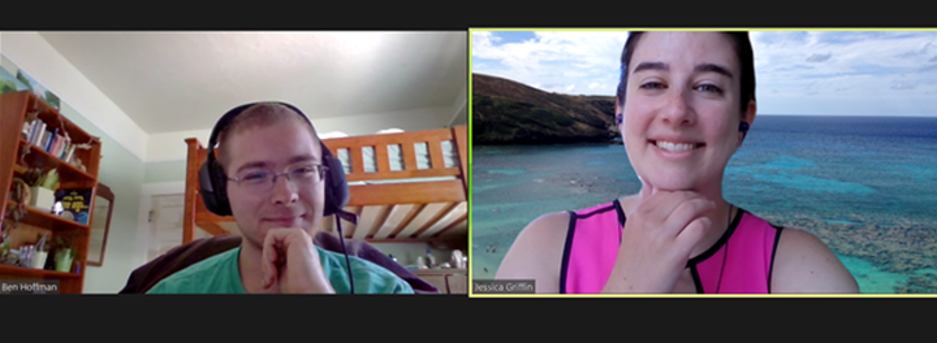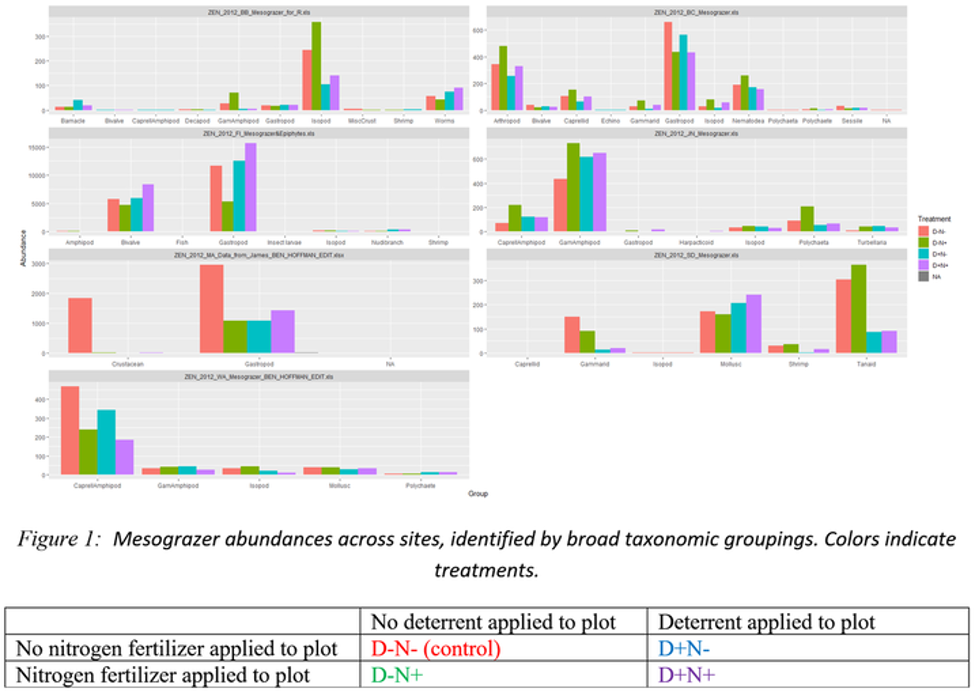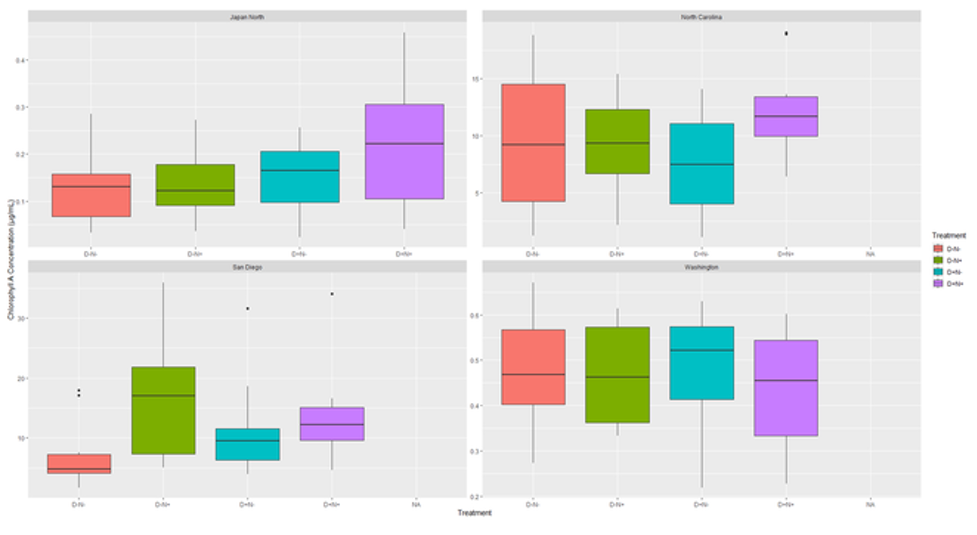Semiconductors to Seagrass: An Electrical Engineering Student’s Summer Studying Marine Ecology
Seagrasses, specifically the species Zostera marina (or eelgrass), provide vital ecosystem services, such as nursery habitat for fish, sediment stabilization, and increased water clarity by slowing down waves. Unfortunately, seagrass populations have been in severe decline over the last century. Some of this is due to seagrass wasting disease, but much is due to human influences. A type of algae called epiphytes grows on the surface of seagrasses, and normally causes their hosts no harm. But when nutrients flow into the ocean (for example, fertilizer runoff), epiphyte blooms can block light from reaching seagrasses, killing them. However, mesograzers, small invertebrates that live in seagrass beds, eat epiphytes and can control epiphyte blooms. As nitrogen pollution continues, it is important to determine what properties of mesograzer communities, such as diversity and species composition, allow them to control epiphyte blooms.

To investigate these dynamics, a group of scientists from fifteen sites around the world formed ZEN (Zostera Experimental Network). They all conducted the same experiment, applying combinations of a chemical deterrent (as a way to remove mesograzers) and fertilizer (which epiphytes take up), then observed the consequences for seagrass communities.
To help my mentor study how mesograzers control epiphyte blooms, I wrote two R scripts that produce visualizations of ZEN data. Crustaceans like gammarids, tanaids, and shrimp seem to be negatively affected by the presence of the deterrent, but the additional presence of the fertilizer seems to weaken the effect. Mollusk populations seem to be either not affected by the deterrent or enjoy a population boost. The deterrent is an insecticide, and therefore mollusks may be less susceptible. Weirdly, in plots with no deterrent, mollusks seem to do better if there also wasn’t any fertilizer added (Fig 1).

The second script compared the concentration of Chlorophyll A (a proxy for epiphyte populations growing on eelgrass blades) across sites and treatments. There was surprisingly little variation in epiphyte load among treatments (Fig. 2).

R was my fourth programming language, so I was able to learn quickly, which meant I got to start making cool graphs almost right away. In between hours of forgetting basic syntax, I was learning new skills in R like data wrangling, improving older ones in coding and writing, and getting important educational and career tips during our weekly professional development meetings. I’m an engineering student, so I initially was looking for engineering internships, but when those opportunities winked out one by one as the pandemic surged, I decided to give a marine science internship a try. BML may not have been directly tied to my major, but I learned new, interesting things, and rounded out my education. In the end, I’m thankful I had the opportunity to participate in this internship.
Biography: Ben Hoffman is an SRJC alum transferring to UCSD for Electrical Engineering. His mentor, Jessica Griffin is a 2nd year PhD student in the Stachowicz lab and Hovel lab, Joint Doctoral Program in Ecology at UCD and SDSU.
